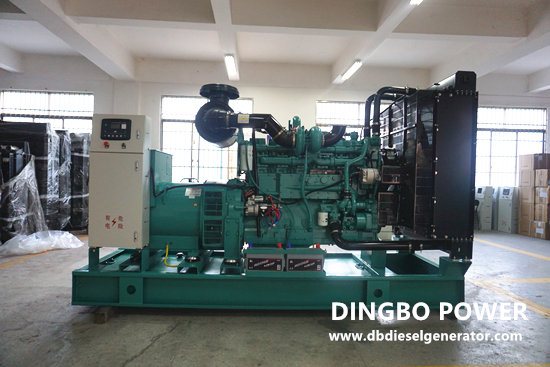dingbo@dieselgeneratortech.com
+86 134 8102 4441

- Home
- Products
- About Us
- Service
- News
- Technical Support
- Contact Us
dingbo@dieselgeneratortech.com
+86 134 8102 4441
Jun. 25, 2023
1.Working principle of bearing shells
The bearing pad is made of steel strip with a thickness of 1-3mm as the backing, and is coated with thin-walled parts made of friction reducing alloy (white alloy, copper lead alloy, or aluminum based alloy) with a thickness of 0.3-1.0mm. Due to the impact of gas pressure and reciprocating inertia force of the piston connecting rod group on the connecting rod bearing during operation, and the high relative sliding speed between the bearing working surface and the shaft, the bearing is prone to heating and wear due to the high load and speed. This requires high mechanical strength, corrosion resistance, heat resistance, and good friction reduction properties of anti friction alloys. Due to the large bearing load of Diesel generator, copper lead alloy or aluminum base alloy bearing bush is usually used for Diesel generator. They have high fatigue resistance, high load-bearing capacity, and good wear resistance, but their friction reduction performance is poor.
In order to improve the surface performance of antifriction alloys, an extremely thin layer of alloy (mostly lead-tin alloy) is usually plated on the antifriction alloy to form a three-layer metal bearing shell. In order to prevent the bearing bush from rotating or moving axially during operation, a positioning convex key that is higher than the back of the bearing bush should be punched. When the bearing bush is installed into the large end hole, the two convex keys should be embedded into the corresponding grooves of the connecting rod rod body and the connecting rod cover respectively. Some bearing shells have shallow grooves on the inner surface for oil storage and lubrication. However, practice has shown that the bearing capacity of bearing shells with oil grooves is significantly reduced, so it is best for bearing shells with high stress, such as the lower bearing shell of the main bearing, not to have grooves. The inner and outer surfaces of the bearing shells are precision machined, therefore, any improper manual processing (such as filing connecting rod caps, welding alloys, etc.) is not allowed. During assembly, there should be proper oil Intermembrane space between connecting rod bearing bush and crank pin. When installing bearing shells, it is necessary to keep them clean. If any debris falls into them, it will damage their tightness, cause deformation, overheating, and even burn out the alloy.

2.Classification of bearing shells
1. Classification of bearing shells by structure
Bearing bush is an important part of sliding bearing of diesel generators. Commonly used bearing shells are divided into two structures: integral and split.
(1) Integral bearing shell (sleeve)
Integral bearing shells generally have oil holes and oil grooves on the shaft sleeve for lubrication. The shaft sleeve made of powder metallurgy generally does not have oil grooves.
(2) Split bearing shells
The split bearing shell is composed of the upper and lower half shells, with oil holes and grooves on the upper bearing shell.
3. Classification of bearing shells by size
Bearing shells can be divided into thin-walled and thick walled bearing shells according to size.
(1) Thin-walled bearing shell
This type of thin-walled bearing bush saves materials, but lacks stiffness, so it requires high machining accuracy for the bearing seat hole.
(2) Thick walled bearing shells
This thick walled bearing bush has sufficient strength and stiffness, which can reduce the machining accuracy requirements for bearing seat holes.
4. Classification of bearing shells by material
Bearing pads can be divided into single material bearing pads and multi material bearing pads according to their materials.
(1) Single material bearing shells
This single material bearing pad has sufficient strength and can be directly made into bearing pads, such as brass or gray cast iron.
(2) Multi material bearing shells
The strength of this multi material bearing liner is insufficient, so it is made of multiple materials.
According to the processing method, bearing shells can be divided into cast bearing shells and rolled bearing shells.
(1) Cast bearing shells
The casting process of this type of bearing bush is good, and it can be produced in single pieces or in large quantities, suitable for thick walled bearing bushes.
(2) Rolling bearing shells
This type of rolled bearing shell is only suitable for thin-walled bearing shells and has high productivity.
Quicklink
Mob.: +86 134 8102 4441
Tel.: +86 771 5805 269
Fax: +86 771 5805 259
E-mail: dingbo@dieselgeneratortech.com
WhatsApp: +86 134 8102 4441
Add.: No. 10 Kechuang Road, High tech Zone, Nanning, Guangxi, China